Where Japanese Sushi Goes… The Surprising Contents of “Kawaii Sushi” in Soho, New York
Sushi chefs” are in great demand around the world due to the sushi boom
It is no secret that sushi is enjoying a worldwide boom. From France, the land of gourmet food, to the United States, Italy, and other Asian countries such as China, Taiwan, and South Korea, sushi is becoming popular because it is both healthy and cool.
Sushi chefs are in great demand, with annual salaries ranging from 4 million yen in Japan to over 10 million yen overseas. For this reason, many young sushi chefs want to seize the opportunity to work abroad.
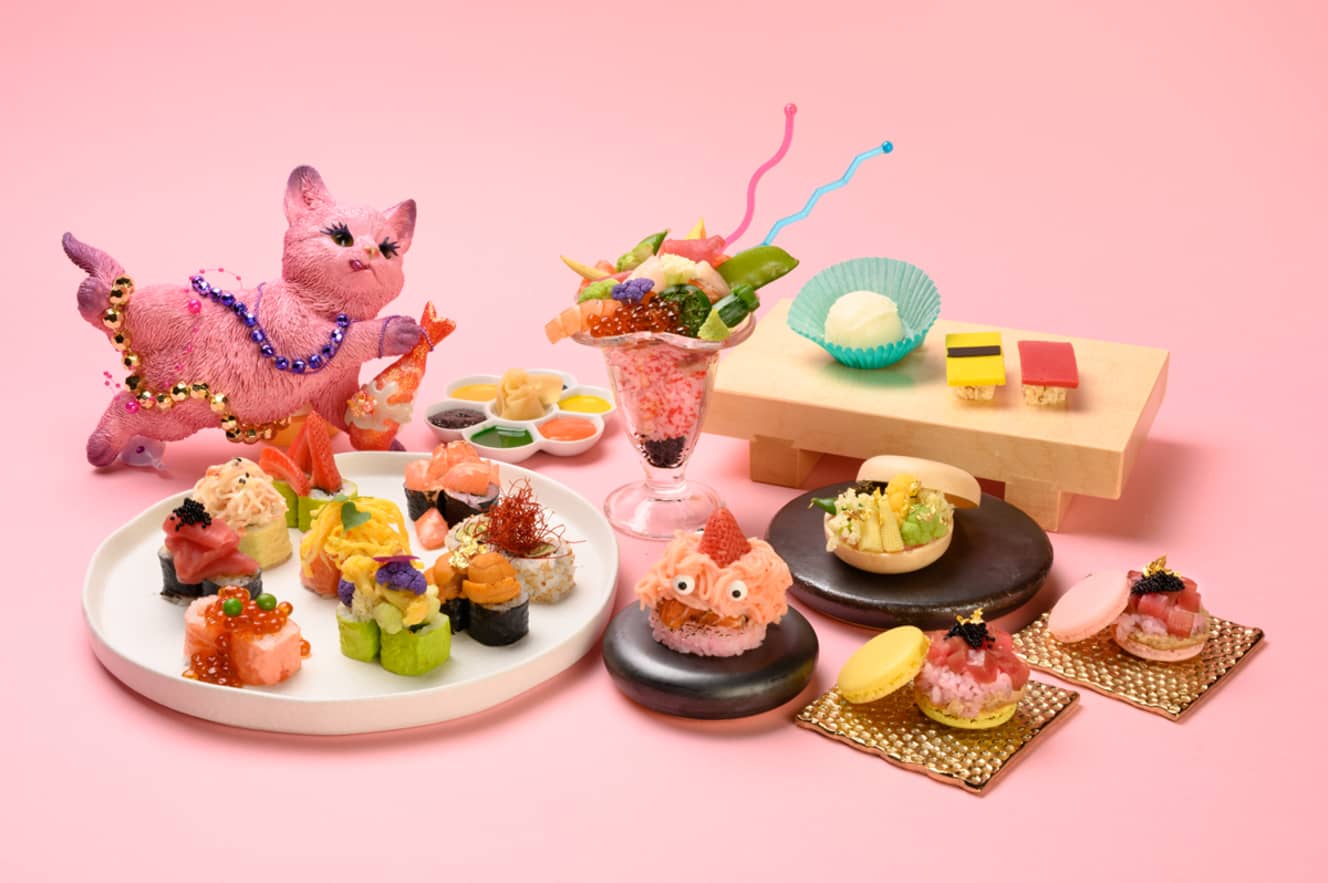
Sushi “Kawaiiized”!
While a variety of sushi restaurants have opened overseas, another notable one opened in New York City on June 28, 2011. It is “SUSHIDELIC” in New York. This sushi restaurant was created by Sebastian Masuda, who produced “KAWAII MONSTER CAFE” in Harajuku, which is visited by celebrities from all over the world. Mr. Masuda is a creator who continues to introduce “Kawaii culture” to the world, and now he has taken sushi, which has already become a part of the American lifestyle, and transformed it into a “Kawaii experience” under the theme of “Immersive Kawaii Experience. The interior of the restaurant is like a different world.
The interior of the restaurant is an otherworldly, psychedelic, iconic space. Staff members wear colorful custom-made costumes. The three cats displayed on the ceiling and the dazzling pink lanes are not unlike kaitenzushi.
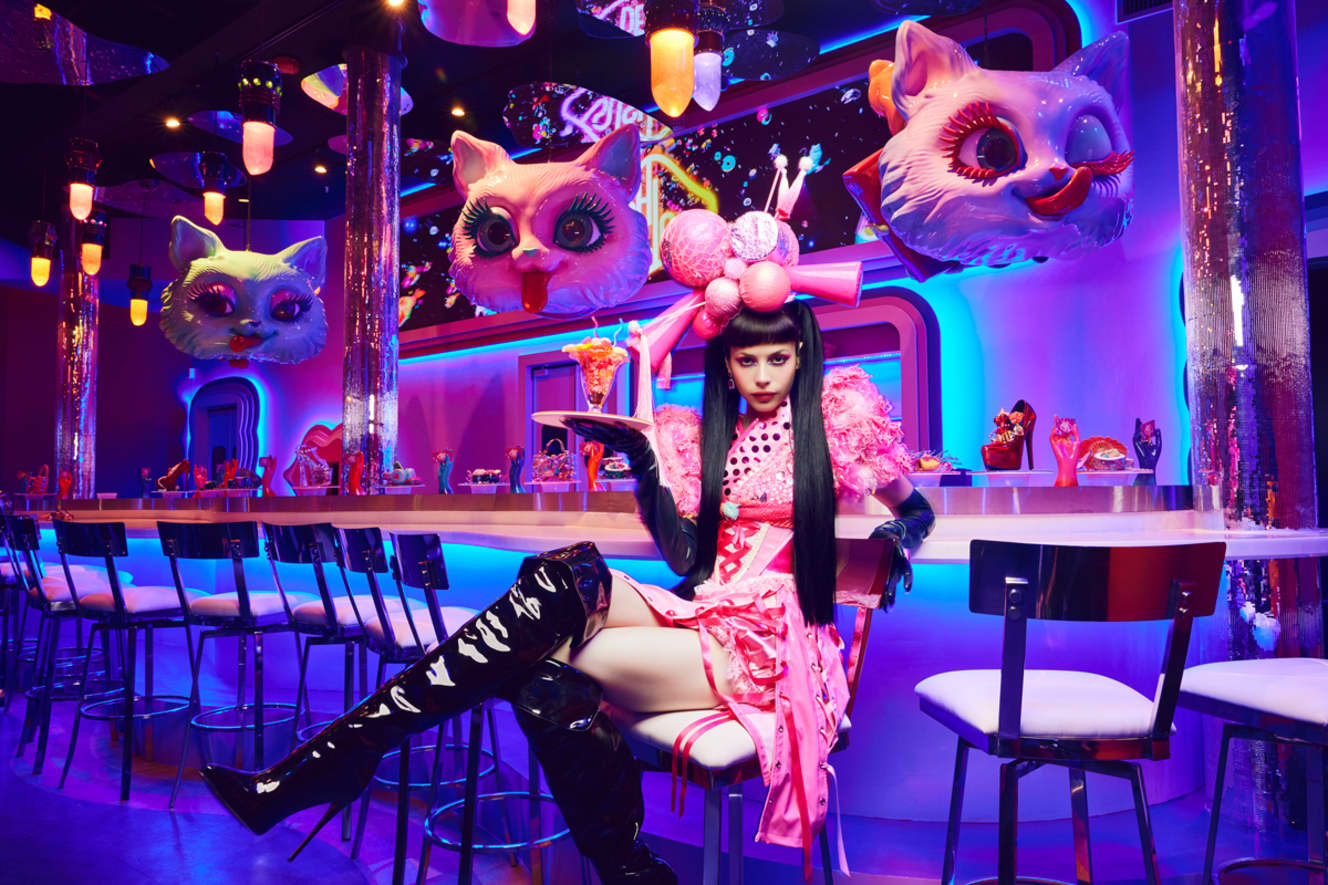
While this may seem foreign in Japan, it is not the first time that sushi has been perceived as peculiar overseas. In the United States, the California roll was born in the 1960s and was reimported to Japan in the 1970s. The California roll is a back roll that is rolled from the outside in the order of rice, nori, and neta (ingredients). Avocado, crabmeat, mayonnaise, etc. are rolled and topped with white sesame seeds. Other types of sushi include the spider roll with fried fish and lettuce, the Hawaiian roll with tuna, and dessert sushi with fruit and nuts.
Sushi is also popular in gastronomic France and Italy, where the basic ingredients are salmon, tuna, and shrimp, and sushi rolls are the most common. The use of cheese (fromage) is typical of European sushi. Although these foreign sushi dishes are well known in Japan, it is difficult to say that they are popular in Japan.
According to the Ministry of Foreign Affairs and the Ministry of Agriculture, Forestry and Fisheries, the number of Japanese restaurants overseas in 2009 increased slightly to about 159,000 from 156,000 in 2007, and the same applies to sushi restaurants. In addition to casual sushi restaurants, upscale omakase-style sushi restaurants (sushi restaurants are not “sushi” but “zushi” because they serve only fish and are authentic) are also popular, as in Japan, and some sushi restaurants are priced at 100,000 yen or more and have received three stars in the Michelin Guide.
What is the definition of “sushi”?
Sushi in other countries is a complicated situation, but it can be thought of as a platform for “sushi” that transcends the boundaries of culinary genres. Pizza, for example, is widely accepted and formatted in Japan. Pizza is a dough (dough) made of flour, water, salt, and yeast, rolled out in a thin, circular shape, topped with a variety of ingredients, and baked in an oven or other oven. Without changing this essence, Japan has developed the pizzas according to the format of pizzas, seasoning them with soy sauce or miso, placing cod roe or shiitake mushrooms on top, or topping them with sakura shrimps or nori seaweed.
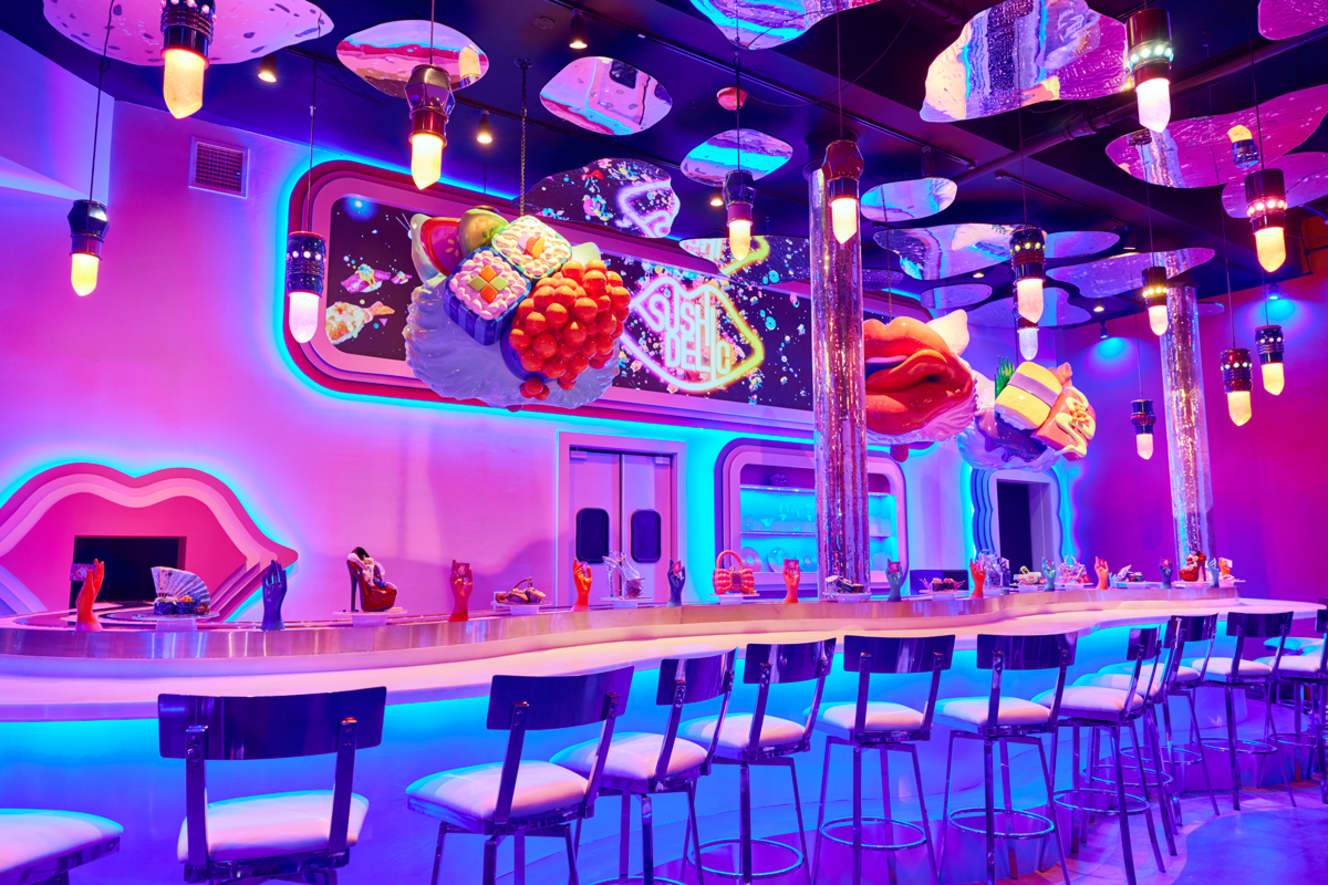
The following two points are important when discussing the platformization of sushi.
Sushi is a dish that combines a red rice ball made of red vinegar or a white rice ball made of white vinegar (rice vinegar) with a variety of seafood and other ingredients. In the narrow sense of the word “sushi,” only seafood and eggs are used as ingredients, but in the broad sense of the word “sushi,” meat and vegetables are also used. The forms of sushi include nigirizushi, gunkanmaki, makizushi, temakizushi, oshizushi, bozushi, and chirashizushi. Expanding from this, in other countries, sushi is a combination of rice and something else.
The next thing to mention is the method of serving. The basic form of sushi is tachi-zushi, in which the chef stands in front of the customer to make the sushi. It does not matter whether the customer is sitting or standing. The opposite is kaitenzushi. The pioneer of conveyor-belt sushi was “Mawaruru Genroku Sushi,” which opened in Higashiosaka City in April 1958, and was developed by Yoshiaki Shiraishi, the founder of Genroku Sangyo, inspired by the conveyor belts used in beer factory production. Compared to standing sushi, conveyor-belt sushi offers more variety. Since sushi is served in lanes, some restaurants in other countries have devised two conveyor belts, one with a cold lane and the other with a warm lane.
It can be said that sushi is loved around the world as a platform where “the main food is a combination of rice and some kind of ingredients, and it is either made in front of you or poured into a lane.
In Japan, the path to becoming a full-fledged sushi chef is a long one. It takes many years to be able to nigiri in front of customers, starting from washing dishes to even being able to touch the ingredients. It is said that it takes three years to cook rice and eight years to make nigiri, or three years to cook rice, five years to make nigiri, and a lifetime to make nigiri.
Recently, sushi academies that train sushi chefs in two months have come into the limelight, and Sushi Ginza Onodera, which has won a Michelin Guide star at its overseas restaurants, has opened a new sushi restaurant called Kaiten Sushi and a standing sushi restaurant. However, for better or worse, the Japanese sushi industry may not be able to take full advantage of this sushi platform because of its traditions, history, pride, and commitment.
Overseas, upscale restaurants oriented toward traditional Japanese sushi are raising their quality and prices, while restaurants that are not born in Japan are opening up, so this is something to keep an eye on.
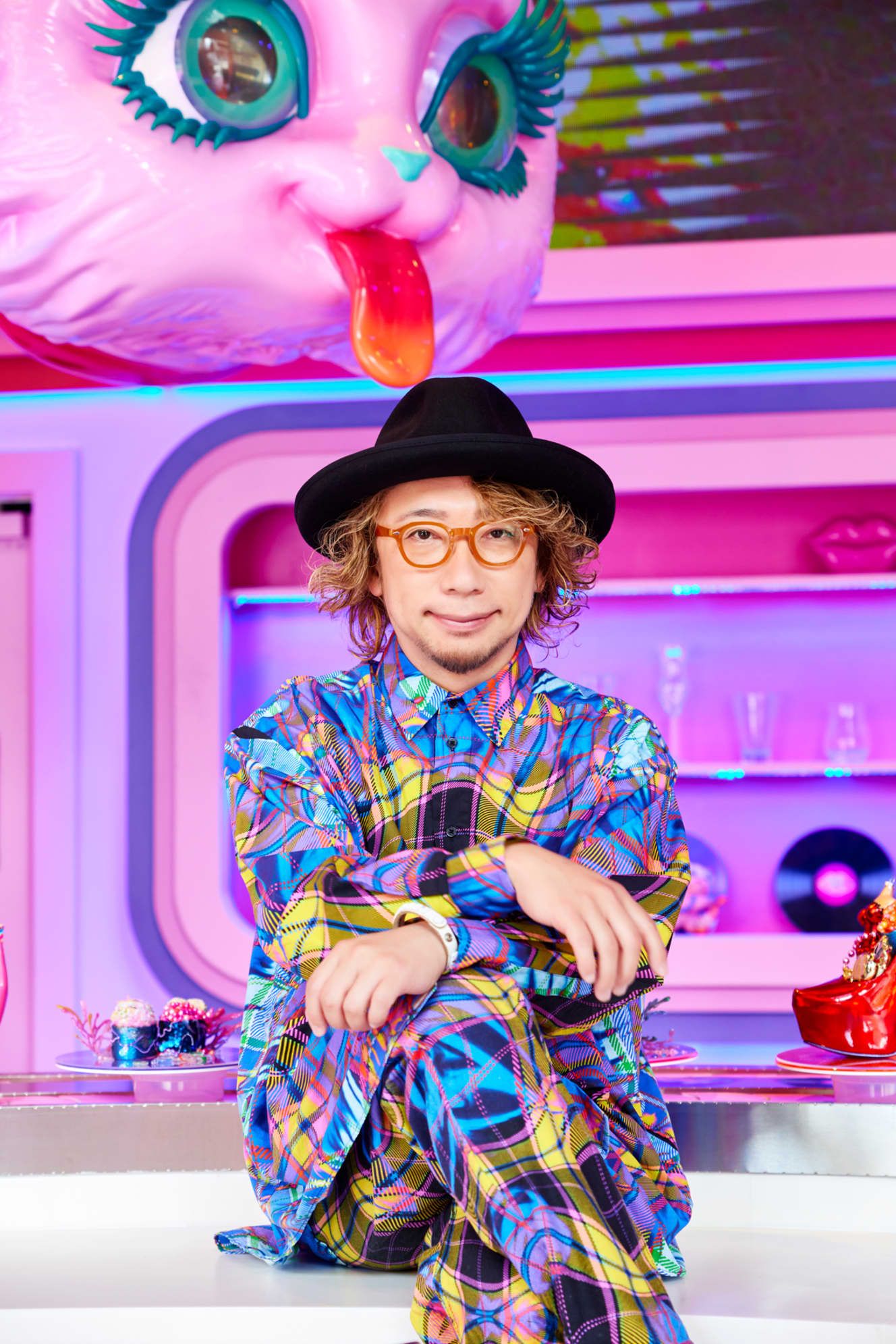
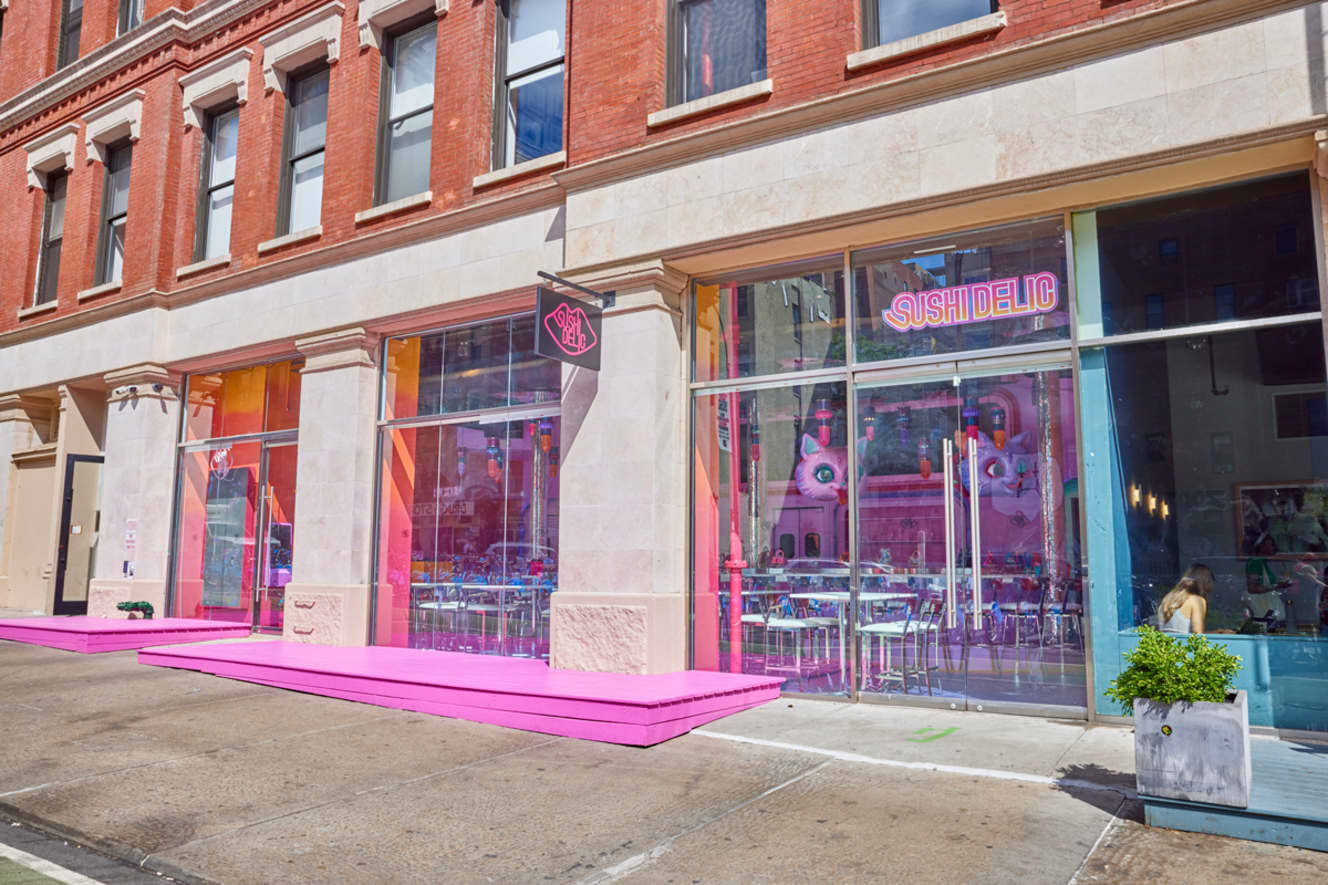
Written by: Dong Long
Born in Taiwan in 1976. Winner of TV Tokyo's "TV Champion" in 2002 and 2007. He loves cooking, sweets, and alcohol, with a focus on fine dining and hotel gourmet cuisine. He writes easy-to-understand articles with his unique perspective on everything from inflammatory incidents to gastronomy and trends, and from the state of food to issues facing restaurants. He is also a judge, lecturer, producer, and consultant.